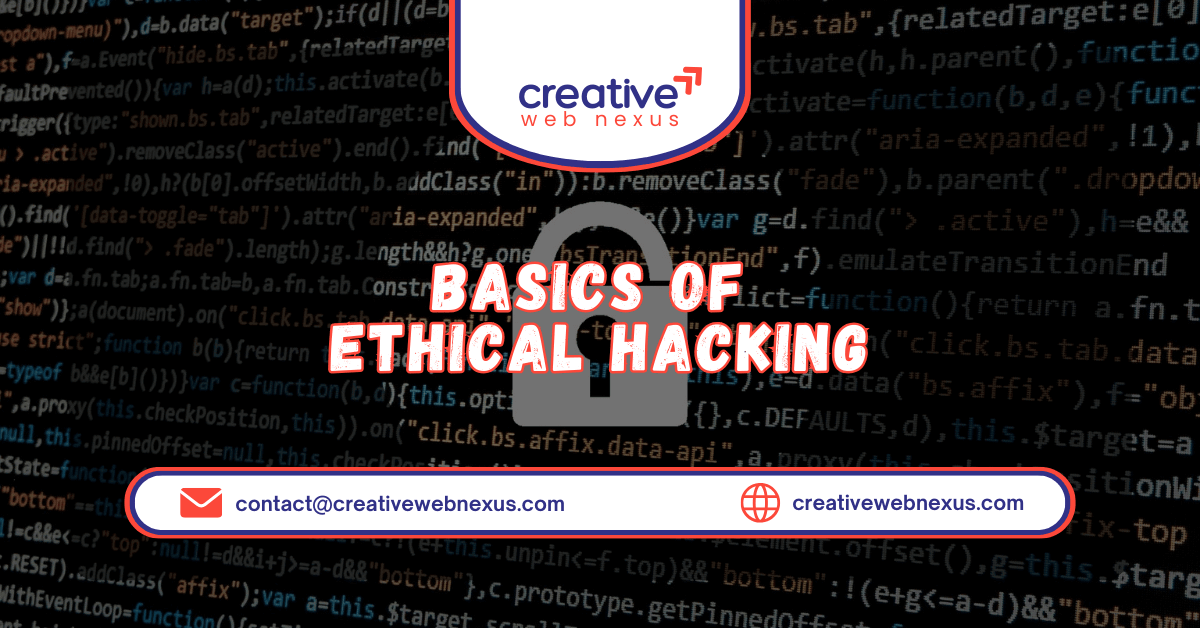In the digital age, where cybercrime continues to grow at an astounding and devastating rate, the need for robust cybersecurity measures has never been more critical. The statistics paint a grim picture; consider that more than 93% of organizations in the healthcare field alone have experienced a data breach in recent years. This isn’t just about stolen credit card numbers; it’s about compromised patient data, disrupted operations, and the erosion of public trust. As someone who’s spent years navigating the complexities of network security, I’ve witnessed firsthand the havoc that malicious actors can wreak. It’s a constant arms race, with cyberattack techniques constantly evolving, demanding an equally agile and proactive defense.
Ethical hacking emerges as a crucial element in this defense. While movies often blame the complexities of hacking on lone genius figures hidden in the shadows, the reality is far more nuanced. The majority of the public lacks a deep understanding of what a hacker actually does. We need to move beyond the stereotypes of the hoodie-clad man typing away late into the night, fueled by Doritos and illuminated by the green glow of binary code. True, there are individuals with God-like abilities in this realm, capable of “rerouting the encryption” or “assessing the nodes” to hack into a mainframe. But ethical hacking is about harnessing those skills for good, employing them to fortify our defenses against those with ill intent. The goal isn’t to become an outlaw or a criminal, but a hero in the digital Western. Ethical hackers are the dressed, the light-colored, the protagonists. This movement, which is fast-growing and legal, becomes essential to stopping the increasing numbers of attacks, malicious attackers, and cybercriminals.
The rise of ethical hacking is a testament to the proactive approach that organizations are now adopting to safeguard their digital assets. Rather than waiting for a cyberattack to occur, companies are now retained security experts, or ethical hackers, to proactively identify vulnerabilities in their system, computer, and application. These individuals, far from being malicious, work with authorized access to attempt to expose weaknesses before attackers can exploit them. The key is to manage the risk with tools that are based to scan, and report. To perform and analyze, and to integrate with existing systems.
What is Ethical Hacking?
In essence, ethical hacking is the practice of using hacking techniques, tools, and knowledge to assess the security of a system, network, or application. Unlike black hat hackers, who seek to exploit vulnerabilities for personal gain or malicious purposes, ethical hackers work with authorized permission to identify and remediate security flaws. Ethical hacking is not just about finding vulnerabilities; it’s about providing actionable solutions to mitigate those risks and strengthen the overall cybersecurity posture of an organization. The main thing is that ethical hackers work in separate ways commonly as experts but they aren’t like outlaw.
Definition of Ethical Hacking
The definition of ethical hacking lies in its intent. It is an attempt to gain unauthorized access to a computer system in a controlled manner, mirroring the strategies and actions of attackers, but with the explicit purpose of identifying and reporting security weaknesses. The process incorporates diverse techniques, from penetration testing to social engineering attacks. It’s a comprehensive analysis of a system’s defenses, designed to uncover vulnerabilities that could be exploited by malicious actors. Understanding this definition is crucial in differentiating ethical hacking from its illegal counterpart. In essence, ethical hacking uses the knowledge that they have of ethical techniques, and various other skills to improve a company. Knowing the ethical definition is crucial in understanding it. With reporting tools to monitor and analyze results. Ethical hackers use their understanding of hacker types and the latest technology to stay one step ahead.
The goal is to secure the data and ensure the privacy of all stakeholders involved. The tools and techniques employed are constantly evolving. As someone with experience in the field, I’ve seen how quickly new vulnerabilities can emerge. By utilizing a scanning SAAS solution we can ensure that our systems are integrated with the latest cybersecurity is extremely important. Ethical hacking requires constant learning and adaptation. To audit a systems security, ethically, it is important to use authorized access to find and fix problems. It also is important to use ethical strategies to report issues.
For example, if the test finds that someone can use force to hack someone’s password and then the ethical hackers will also be able to find which algorithm someone used to secure their password. Ethical hackers need to have a strong understanding of ethical codes. The definition is to have ethical hackers understand the codes and follow them as a means of identifying and addressing computer weaknesses with ethical methods. By following ethical codes, there is no abuse or privacy violations. Ethical hackers should utilize the open-source technologies that are useful.
Role of an Ethical Hacker
The role of an ethical hacker extends beyond simply finding vulnerabilities. These experts act as trusted advisors, guiding organizations in implementing robust security measures and improving their overall cybersecurity. They help identify the weaknesses in web applications, servers, and networks, providing actionable recommendations for remediation. The process involves directing and testing to create something valuable. These experts also play a crucial role in educating employees about security best practices and raising awareness about potential threats like social engineering attacks. They serve as cybersecurity, the heroes, the light of defense. This allows us to check the vulnerabilities of a company. Understanding these vulnerabilities is essential for the security of the company and for our analysis.
In my experience, the most effective ethical hackers are those who possess a deep understanding of both attack and defense strategies. They think like attackers, anticipating their actions and identifying potential entry points into a system. By the most part a hacker will want to get into a system by any means necessary and that’s why it’s important for the role of an ethical hacker to think the same way. This knowledge, combined with a strong ethical compass, makes them invaluable assets in the fight against cybercrime. The role is to be ethical in their approach as they look for issues. The role is very much dependent upon the organizations that they are a part of.
This is useful because ethical hackers provide technical support and exclusive features for their companies. Another aspect of ethical hackers is that they can help their company by using their skills to manage and review a company. This is because ethical hackers are supposed to think like an unethical hacker, as well as to think of the company’s needs. Ethical hackers are useful like having anti-virus software. They help find and solve problems. The goal is to reduce the probability of something bad. It is important to maintain and manage security when checking the system for vulnerabilities. The key is prevention to help improve security and minimize risk.
White Hat vs. Black Hat Hackers
One of the key categories of hackers are white hat and black hat. It’s a battle between good and evil, similar to what you see in Western movies, where the protagonists are the heroes. The contrast between white hat and black hat hackers is stark. White hats, or ethical hackers, are the good guys, working to protect organizations and individuals from cyber threats. Black hats, on the other hand, are the criminals, exploiting vulnerabilities for personal gain or malicious purposes. The gray hat hackers have less defined agendas. The hat may represent their color by their actions, but they have a metaphysical hat color.
The difference is stark in that one is authorized and the other is unauthorized. Ethical hackers may use techniques such as sniffing, but they do so with authorization from the company. The other type are dressed like antagonists in black and only want to hurt and take from other people. Unlike the black hat hackers they provide solutions. One helps you and the other hurts you. The reality is that both white hat and black hat hackers utilize the same techniques. This is to say that, they both have the capability to hack a system.
In the real world, this is a battle to save many organizations at a time by knowing exactly how to find and fix the vulnerabilities that they face on a daily basis. It all depends on which side you use this knowledge for. A white hat hacker uses the knowledge for good and a black hat hacker uses the knowledge for bad. Knowing the difference can save your system and help you find the right hero. The hero wearing white and the outlaw dressed in black. The color of their hat shows their intentions.
Importance of Ethical Hacking in Cybersecurity
In the ever-evolving landscape of cybersecurity, ethical hacking has emerged as an indispensable practice. It is the proactive approach that helps organizations identify their weaknesses and fortify their defenses against attackers. The value in cybersecurity cannot be overstated. The rate of cybercrime is astounding, making ethical hacking an essential component of any robust security strategy.
How Ethical Hackers Protect Organizations?
Ethical hackers act as digital guardians, proactively searching for vulnerabilities within an organization’s infrastructure. By employing a range of techniques, they mimic the actions of attackers to expose potential weaknesses. This proactive approach allows organizations to address security flaws before they can be exploited by malicious actors. Ethical hackers are like digital heroes who use their skills to help people. It’s a proactive approach that is valuable because it makes the organization aware of vulnerabilities.
Ethical hackers play a critical role in protecting organizations, they often use tools and techniques to test the resilience of systems and networks. These experts understand that the best defense is a good offense. The tools used by ethical hackers include scanners, analyzers, and exploit frameworks such as the ethical tools. These can be used to test for vulnerabilities in web applications and networks. To identify potential weaknesses in the system.
This allows for organizations to have expert support, exclusive information, and to manage the security of the company through review. It also allows for the company to have solutions for the problems that they face.
Ethical Hacking in Preventing Cyber Threats
Ethical hacking plays a critical role in preventing cyber threats. The methods provide a strong basis for organizations to prevent and reduce future attacks. By understanding the mindset and methods of attackers, organizations can develop a comprehensive strategy to counter cyber threats. Ethical hackers protect the organizations through technical support and reporting tools. The tools and reports should incorporate the following information: network traffic, OS, devices, real-time updates, highlights, browser information, packets, configurations, etc.
One of the primary ways ethical hacking prevents cyber threats is by uncovering security vulnerabilities. These vulnerabilities include SQL injections, code execution, etc. The results of the findings in cyber threats are used to implement preventive measures and safeguards. Through their work, cyber vulnerabilities are detected and analyzed, allowing organizations to take actions to mitigate the risk. One approach is to install new security measures. As well as being in accordance with the best industry standards.
The goal of ethical hacking in preventing cyber threats is to create an environment. With the use of authorized access, ethical hackers follow ethical strategies for all systems. Ethical hacking can help to minimize risk by using open source tools and finding problems before they arise. It is also important to perform risk tests to ensure all vulnerabilities are caught. To review the system. And ensure the reporting is easy to follow.
Case Studies of Ethical Hacking Success
Real-world case studies demonstrate the effectiveness of ethical hacking in preventing cyber incidents. Stories such as these show and highlight the importance of ethical hacking. Organizations can learn from past mistakes and take preventive measures for the future. Some examples are financial institutions or organizations that have implemented ethical hacking.
One notable case study involves a financial institution that engaged ethical hackers to assess the security of its online banking platform. The ethical hackers identified several critical vulnerabilities. Including SQL injections and cross-site scripting attacks. The institution was able to fix the vulnerabilities. This prevented potential data breaches. This is an example of how ethical hacking can be a useful and powerful preventative tool. The ethical hackers were retained to make the improvements.
Ethical hacking has proven successful for the following reasons:
- Preventing cybercrime
- Preventing data breaches
- Prevention of network attacks
- Prevention of malware in the system.
Key Concepts in Ethical Hacking
Before diving into the practical aspects of ethical hacking, it’s crucial to grasp some fundamental concepts that underpin the field. These concepts provide a framework for understanding how ethical hackers approach security assessments and how they contribute to the overall cybersecurity posture of an organization. These concepts are not merely theoretical; they are the building blocks upon which all ethical hacking activities are based.
- Confidentiality, Integrity, and Availability (CIA Triad): This triad forms the core principles of information security. Confidentiality ensures that sensitive information is protected from unauthorized access. Integrity maintains the accuracy and completeness of data. Availability guarantees that authorized users have timely and reliable access to systems and data when needed. Ethical hackers strive to uphold these principles by identifying vulnerabilities that could compromise any aspect of the CIA triad. A breach in any of these components can cause big issues. For example, a cyberattack could ruin a hospital’s ability to take care of their patient, therefore causing issues with their patient data.
- Threat Modeling: This involves identifying potential threats to a system or network and assessing the likelihood and impact of those threats. Ethical hackers use threat modeling to prioritize their efforts and focus on the most critical vulnerabilities. I found this to be important as it makes the process more effective. It’s similar to having a blueprint before building a house. I’ve seen firsthand how effective threat modeling can be in uncovering hidden risks.
- Risk Assessment: This process involves evaluating the potential damage that a threat could cause and determining the likelihood of that threat occurring. Risk assessments help organizations make informed decisions about resource allocation and security investments. Ethical hackers use risk assessments to prioritize their efforts and focus on the most critical vulnerabilities.
Common Tools Used in Ethical Hacking
The arsenal of an ethical hacker is diverse, ranging from specialized software applications to versatile open-source utilities. These tools are essential for performing various tasks, from reconnaissance and vulnerability scanning to penetration testing and password cracking. Choosing the right tool for the job is crucial for success, and ethical hackers must have a solid understanding of the capabilities and limitations of each tool in their repertoire. The following tools are commonly used: Nmap, Netsparker, Burp Suite, and Wireshark.
Best Software for Ethical Hackers
The landscape of ethical hacking software is constantly evolving, with new tools and updates emerging regularly. However, some software applications have consistently proven their value and remain essential for ethical hackers. This includes tools such as Burp Suite, and Nmap.
- Burp Suite: This integrated platform is a must-have for web application security testing. It allows ethical hackers to intercept and manipulate web traffic, identify vulnerabilities, and perform a wide range of attacks. Its versatility and comprehensive features make it a favorite among security professionals. It incorporates a bunch of different helpful things that helps it test the whole process.
- Nmap: This powerful network scanner is used for discovering hosts and services on a network, identifying open ports, and gathering detailed information about operating systems and applications. Nmap is an essential tool for network reconnaissance and vulnerability assessment. It does this on both local and remote hosts.
- Nessus: Nessus is a widely used vulnerability scanner that can identify a vast range of security flaws in systems, applications, and networks. It provides detailed reports and remediation recommendations, making it a valuable tool for organizations of all sizes. This can also identify the weaknesses in a company and help improve security.
Open-Source vs. Paid Hacking Tools
Ethical hackers have access to both open-source and paid hacking tools, each offering its own advantages and disadvantages. Open-source tools are often free to use and modify, providing a high degree of flexibility and customization. However, they may lack the user-friendly interfaces and comprehensive support that paid tools offer. Paid tools, on the other hand, typically come with extensive documentation, regular updates, and dedicated technical support. These tools can scan a network that may include Windows, Mac, and Linux operating systems.
- Open-Source Advantages: Flexibility, customization, community support, cost-effectiveness.
- Open-Source Disadvantages: Steeper learning curve, limited support, potential security risks due to lack of rigorous testing.
- Paid Tools Advantages: User-friendly interfaces, comprehensive support, regular updates, enhanced security features.
- Paid Tools Disadvantages: Higher cost, limited customization, potential vendor lock-in.
The choice between open-source and paid tools ultimately depends on the specific needs and resources of the ethical hacker and the organization they are serving.
How to Use Ethical Hacking Tools Responsibly?
Using ethical hacking tools responsibly is paramount to maintaining the integrity and legality of security assessments. Ethical hackers must always obtain authorized permission before conducting any hacking activities and must adhere to strict ethical guidelines. Abusing ethical hacking tools can have severe consequences, including legal repercussions and damage to reputation. The aim is to mitigate risk and not cause more harm.
- Obtain Permission: Always obtain explicit permission from the organization before conducting any hacking activities.
- Define Scope: Clearly define the scope of the assessment and stick to it. Avoid straying beyond the agreed-upon boundaries.
- Protect Data: Handle sensitive data with care and avoid disclosing any confidential information without authorization. Be careful of data breach.
- Document Findings: Thoroughly document all findings and provide detailed reports to the organization. This makes it easy to see any issues in the system.
- Respect Privacy: Avoid accessing or disclosing personal information without explicit consent.
Steps to Become an Ethical Hacker
Becoming a skilled ethical hacker requires a combination of education, training, and hands-on experience. It’s a journey that involves acquiring a solid foundation in computer science, networking, and security principles, as well as developing practical skills in using ethical hacking tools and techniques. Here are some steps to become one of these experts.
Educational Requirements
A formal education in computer science, cybersecurity, or a related field is highly recommended for aspiring ethical hackers. A degree program can provide a comprehensive understanding of the fundamental concepts and principles that underpin the field. I’ve found that a strong educational foundation significantly enhances one’s ability to tackle complex security challenges.
- Computer Science: Provides a strong foundation in programming, data structures, algorithms, and operating systems.
- Cybersecurity: Focuses specifically on security principles, network security, cryptography, and incident response.
- Information Technology: Offers a broader perspective on IT infrastructure, network administration, and system management.
Certifications for Ethical Hackers
Certifications are valuable credentials that demonstrate an ethical hacker’s knowledge and skills. They can enhance career prospects and provide credibility in the industry. Here are some popular certifications for ethical hackers:
- Certified Ethical Hacker (CEH): This is a widely recognized certification that covers a broad range of ethical hacking techniques and tools.
- Offensive Security Certified Professional (OSCP): This certification focuses on hands-on penetration testing skills and requires candidates to demonstrate their ability to compromise systems in a lab environment.
- CompTIA Security+: This entry-level certification covers fundamental security concepts and is a good starting point for those new to the field.
Building Hands-On Experience
While education and certifications are important, hands-on experience is crucial for developing practical ethical hacking skills. Aspiring ethical hackers can gain experience by participating in capture-the-flag (CTF) competitions, working on personal security projects, and volunteering for security assessments.
- CTF Competitions: CTFs are online or in-person competitions where participants solve security challenges to earn points.
- Personal Security Projects: Setting up a home lab and experimenting with different security tools and techniques can provide valuable hands-on experience.
- Volunteering for Security Assessments: Offering to conduct security assessments for non-profit organizations or small businesses can provide real-world experience.
Legal and Ethical Aspects of Hacking
Ethical hacking is not just about technical skills; it’s also about adhering to legal and ethical boundaries. Ethical hackers must always operate within the bounds of the law and must respect the privacy and rights of others. Violating these principles can lead to severe consequences, including legal repercussions and damage to reputation.
- Legality: Always obtain authorized permission before conducting any hacking activities.
- Ethics: Adhere to a strict code of ethics and respect the privacy and rights of others.
- Transparency: Be transparent with the organization about the scope and findings of the assessment.
Common Ethical Hacking Techniques
Ethical hackers employ a variety of techniques to assess the security of systems and networks. These techniques are designed to mimic the actions of attackers and uncover vulnerabilities that could be exploited.
Penetration Testing
Penetration testing is a simulated attack on a system or network to identify vulnerabilities and assess the effectiveness of security controls. Penetration testers use a variety of tools and techniques to gain unauthorized access to the system, mirroring the actions of attackers.
Social Engineering Attacks
Social engineering attacks involve manipulating individuals into divulging confidential information or performing actions that compromise security. Ethical hackers use social engineering techniques to assess the human element of security and identify vulnerabilities in security awareness training.
Network Security Testing
Network security testing involves assessing the security of a network by scanning for open ports, identifying vulnerabilities, and testing the effectiveness of firewalls and intrusion detection systems.
Challenges and Risks in Ethical Hacking
Despite its benefits, ethical hacking is not without its challenges and risks. Ethical hackers must navigate a complex landscape of legal and ethical considerations, while also managing the technical challenges of uncovering vulnerabilities and protecting sensitive information.
- Legal and Ethical Considerations: Operating within the bounds of the law and adhering to strict ethical guidelines.
- Technical Challenges: Uncovering hidden vulnerabilities and protecting sensitive information.
- Risk of Damage: Minimizing the risk of causing unintended damage to systems during the assessment.
Ethical Hacking vs. Malicious Hacking: Understanding the Difference
The key difference between ethical hacking and malicious hacking lies in the intent. Ethical hackers work with authorized permission to identify and remediate security vulnerabilities, while malicious hackers seek to exploit those vulnerabilities for personal gain or malicious purposes.
- Intent: Ethical hackers seek to protect, while malicious hackers seek to exploit.
- Authorization: Ethical hackers operate with permission, while malicious hackers operate without permission.
- Consequences: Ethical hacking leads to improved security, while malicious hacking leads to damage and loss.
Future of Ethical Hacking and Career Opportunities
The future of ethical hacking is bright, with increasing demand for skilled cybersecurity professionals. As cyber threats continue to evolve, organizations will need ethical hackers to protect their systems and data.
- Growing Demand: The demand for ethical hackers is expected to continue to grow in the coming years.
- Diverse Career Opportunities: Ethical hackers can find career opportunities in various industries, including finance, healthcare, and government.
- Evolving Skillsets: Ethical hackers must continuously update their skillsets to keep pace with the evolving threat landscape.









